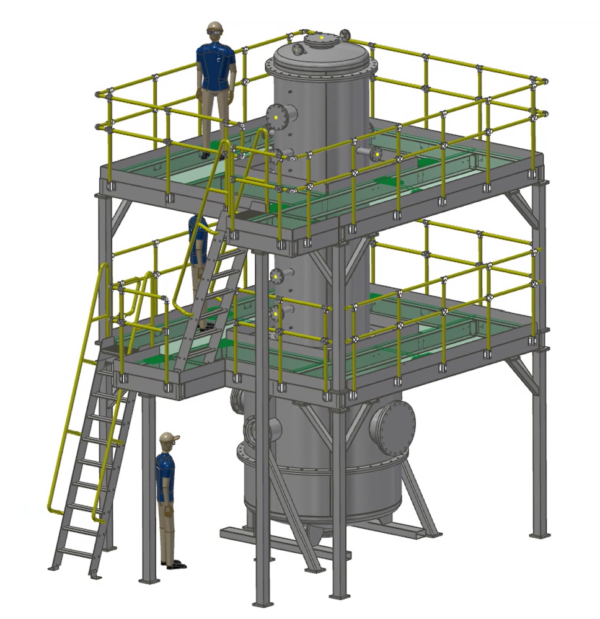Swedish startup Green14 is planning to produce polysilicon by using novel green hydrogen technology.
The company is currently cooperating with Sweden’s Royal Institute of Technology (KTH) in the development of a pilot reactor process where hydrogen plasma acts as a quartz reductant to remove oxygen from the silicon dioxide.
“It also acts as a refining step because of the very high temperatures in the plasma section,” Green14 CEO, Adam Podgorski, told pv magazine, noting that green hydrogen represents an alternative to the use of coal and chlorine as the processing reactants in conventional solar silicon production.
Green14 used a plasma spray process that requires an output of 85 kW in a lab-scale setup with the aim of simulating bulk silicon production from quartz in the presence of hydrogen plasma as a reductant and refining mechanism. The process collects silicon on plates in the plasma plume.
According to Podgorski, the process is able to deliver silicon at 5N to 6N purity levels (99.999% to 99.9999%). He said these results were validated by Norwegian research institute SINTEF and Czech plasma technology provider PlasmaSolve.
“Our pilot aims to repeat this 6N purity at scale and push it even further before integrating it into post-processing steps,” said Podgorski. The hope for the pilot reactor is to achieve “high purities on timescales of seconds rather than the hours that it takes for Siemens polysilicon.”
Popular content
The startup plans to build a 25-kilotonne plant in Northern Sweden, equating to an annual wafer capacity of 10 GW. “We have a letter of intent (LOI) in place from key customers and we are working on more,” said Podgorski, without providing further details.
When asked about green hydrogen sources, he said that Sweden has several large renewables-driven hydrogen electrolysis projects underway, such as H2 Green Steel.

Green14
This content is protected by copyright and may not be reused. If you want to cooperate with us and would like to reuse some of our content, please contact: editors@pv-magazine.com.


By submitting this form you agree to pv magazine using your data for the purposes of publishing your comment.
Your personal data will only be disclosed or otherwise transmitted to third parties for the purposes of spam filtering or if this is necessary for technical maintenance of the website. Any other transfer to third parties will not take place unless this is justified on the basis of applicable data protection regulations or if pv magazine is legally obliged to do so.
You may revoke this consent at any time with effect for the future, in which case your personal data will be deleted immediately. Otherwise, your data will be deleted if pv magazine has processed your request or the purpose of data storage is fulfilled.
Further information on data privacy can be found in our Data Protection Policy.